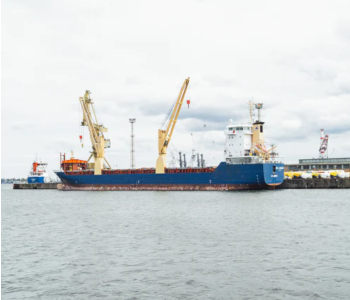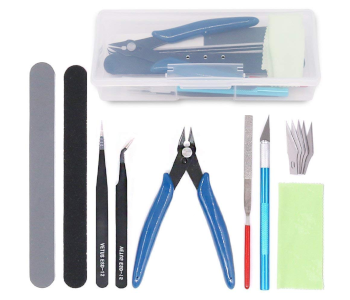Laser Welding – How It Works, Applications, Pros and Cons
Welding has long been established as a critical process in the field of manufacturing. Typically used to join two pieces of the same material together, welding is done to create structures too complex to be done through single-piece construction.
Using lasers is a relatively new way to do welding. While the concept is still the same – using heat to join two materials together – the way in which heat is delivered by lasers is quite unique. Although laser welding has been around for several decades, the use of this technology has only been picked up recently because of the transition to automated manufacturing processes.
What is laser welding and how does it work?

Simply put, laser welding is a process in which lasers are used to melt the material on the surface of a workpiece, allowing it to be joined to another workpiece made of the same material. Laser welding is typically done for either metals or thermoplastics. Different types of lasers have also been used for welding, with older applications using solid-state (like Nd: YAG) or gas lasers (like CO2 lasers) are widely used nowadays.
A laser is merely a highly concentrated beam of light that delivers a vast amount of power. The high power density of lasers allows them to melt the material of the workpiece in a controlled manner. By subjecting the material to a high-powered laser beam, the molecules in its surface gain enough energy to get excited and gain more fluid-like properties.
When excited molecules of the same material come into contact and concurrently move to lower excitation states, they revert to being solids and develop a bond at the molecular level.
Laser welding (as with other laser-based technologies) remained almost exclusively used in laboratories and research institutes until sometime in the late 1990s. During this time, the concept of additive manufacturing – particularly 3D printing – was starting to gain popularity.
Although the technology for 3D printing using plastic resins or filaments had already been developed, there were not many viable ways for an equivalent process to be applied to metals. Along came laser welding, allowing for the rapid and highly automated joining of powdered metal as raw material. The popularity of 3D printing also gave a boost to laser welding, giving this previously experiment technology a niche in the modern manufacturing world.
Pros and cons of laser welding
In looking at the benefits and drawbacks of laser welding technology, it’s more worthwhile to compare it to traditional welding techniques – those that use a gas flame or an electrical arc. After all, these classic welding techniques are still the most commonly practiced and are likely the entities that laser welding will be put up against.
PROS:
Ideal for automation
The number one thing that makes the transition to laser welding worth it is that it fits right in with an automated manufacturing process. Although laser welding gained popularity in 3D printing, it has now also become useful for automated versions of more traditional welding applications.
Automating the welding process provides a multitude of benefits for the manufacturer. It reduces the need for manual operations, resulting in products with better precision and more consistent quality. Automated systems are also a lot faster than having human welders do the work, which is crucial for high-volume industries.
Compatible with a wide range of materials
In traditional welding using a flame or electrical arc, changing over from one material to another involves changing the flame temperature of the intensity of the electrical arc. Lasers work much in the same way in that their intensities can be adjusted to make them suitable for different materials. The main benefit of lasers in this context is that they can have pre-set parameters for different materials, making changeovers a lot smoother.
The high power density of lasers makes them capable of welding materials that would have been challenging for other welding techniques. The list of materials that can be welded with lasers is long and includes super strong metals like titanium and carbon steel. In terms of sheer power density, the only technology that can complete with laser welding is electron beam welding.
Very high heating rates
Another benefit of the high power density of a laser is that it melts material a lot faster than a flame or an electric arc. This allows for faster welding rates and the creation of stronger welds. The depth of penetration in laser welding can be controlled by adjusting the power supplied to the laser. For very thing materials, pulses of the laser can be used instead to prevent damage to both the material and the machine.
Can weld joints with complex geometry
A unique trait of laser welding is that it can work from a distance. The tip of the laser does not need to be close to the material to deliver the power necessary for welding. This gives more room for the manipulation of the workpiece, making the welding of joints with complex geometries possible.
Enhanced safety
Laser welding machines are typically fully automated and have enclosed working spaces. This means that personnel no longer need to be exposed to the high temperature and particulates generated during welding. Even on this merit alone, a laser welding machine is already a worthwhile investment. Any technology that enhances workplace safety and keeps personnel away from unnecessary hazards should be worth considering.
CONS:
Metals may crack due to rapid cooling
Anything that heats quickly also cools quickly. This is also the case in laser welding. Localized delivery of power through the lasers means that joints are welded together pretty quickly. However, it also means that the heat in the joints is dissipated through the material just as rapidly.
This causes a huge buildup of thermal stress, which not all materials can handle without getting damaged. Carbon steel is a classic example of a metal that tends to become brittle and crack when cooled too quickly.
High capital requirement
This is probably the biggest hurdle that stands between this technology and more widespread adoption – laser welders are expensive. This is even more glaring when compared to older welding methods that use gas flames or electrical arcs.
Welding is often seen as a blue-collar job that needs a skilled welder but does not necessarily need expensive equipment. Laser welding flips this whole perspective around – the equipment is expensive and operating it doesn’t take a lot of skill.
Applications of laser welding
In many ways, laser welding fits right in with just about any application of standard, old-fashioned welding. Given how long welding has already been established as a manufacturing process, applications of laser welding aren’t exactly hard to identify.
Laser welding has turned out to be particularly useful in heavy or high-volume manufacturing industries. These are industries that stand to benefit the most from the added speed and precision of laser welding technology.
Shipbuilding

Shipbuilding is easily one of the most demanding industries for any process, including welding. Swapping in laser welding for traditional welding techniques can make the construction of steel or metal structures in ships faster and stronger. The low distortion of localized heating by laser welding also makes it easier to make high-precision parts with accurate dimensions.
Automobile industry

When it comes to the automobile industry, speed and quality are probably the two most important factors to consider. Luckily, laser welding excels in both. The tool-free operation of lasers welders means that there is reduced downtime for regular maintenance and tool changes.
Tool manufacture

In the field of tool manufacturing, the versatility of laser welding is the characteristic that comes into play. Whether tools are created via subtractive or additive manufacturing. Laser welding is often brought in to join separate elements and achieve a tool’s intended form factor. The flexibility of laser welding when it comes to joint geometry makes it ideal for an industry that manufactures a diverse array of products.
These are only three of possibly hundreds of other different applications of laser welding. Any type of on-site use of traditional welding will probably benefit from making the upgrade to a laser welding machine.
There are even “portable” laser welding machines that use fiber laser technology, although the portability of such machines is still questionable. Lasers require a lot of power, and this huge power source comprises the bulk of these “handheld” machines. This is perhaps the only department where old-fashioned welding still beats laser welding, as machines for electric arc welding are very light and handy.
Final thoughts
In many ways, laser welding seems like the sensible next level of evolution from traditional welding techniques like gas flame and electrical arc. The equipment is a little more expensive, but laser welding is undoubtedly more energy-efficient, faster, and more precise. More importantly, laser welding machines are designed to run automatically, which is a crucial element in modern manufacturing.
Portability remains the major challenge for laser welding technology, particularly in remote construction or repair jobs. Still, no hurdle is insurmountable especially if there is an industrial and commercial demand for the technology.


The advantages of using laser welding equipment for additive manufacturing are that the demand for customized components is reduced and the system is also flexible and modularity in design. However, major issues that come with it are system control and automation work.